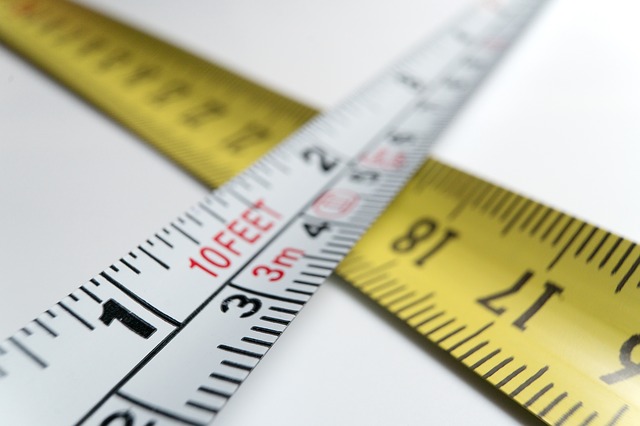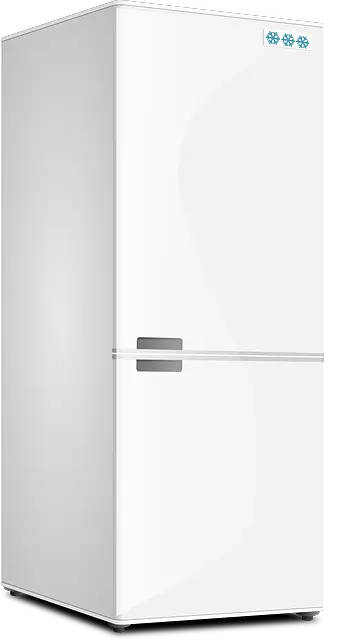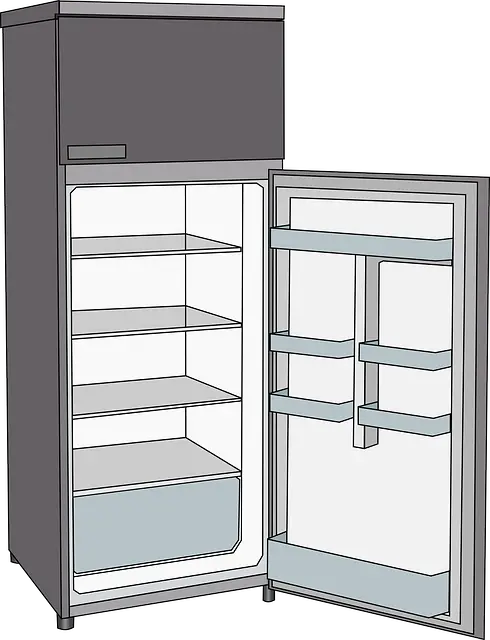
One likely reason that you are curious about how to measure a refrigerator in cubic feet is that you are planning to get a new one. But it could be for several other reasons too.
First things first, before you get right into measuring the cubic feet of the fridge, it is important to know the external measurements as well as the internal measurements of the fridge.
Knowing the external measurements of a refrigerator will help you plan where to install it and how much space you need there. This is especially necessary for built-n models.
You also need the internal measurement (which is usually the storage space measured in cubic feet) to decide on how much of your food items the fridge can conveniently accommodate.
Meanwhile, it also helps to know the configuration of the fridge as well – whether it is a side-by-side or French door refrigerator, a bottom-mount fridge or a top-mount fridge. This would help you determine how to get the dimensions of your refrigerator.
We also recommend using a steel tape measure rather than the softer sewing tape measure. Steel tape measures stay straight for the most part and tend to be more accurate in measuring straight edges than the sewing tape measure.
If you don’t have one already then you may want to consider getting the highly-rated Komelon Self Lock™ 25-Foot Power Tape. Its self-locking mechanism makes the blade extend smoothly. More so, the blade is coated with nylon for durability and long-lasting use.
[amalinkspro type=”showcase” asin=”B000BQKXLE” apilink=”https://www.amazon.com/dp/B000BQKXLE?tag=refrigeratorsreviewed-20&linkCode=osi&th=1&psc=1″ new-window=”true” addtocart=”true” nofollow=”true” sc-id=”4″ imgs=”LargeImage” link-imgs=”false” specs=”Features a self-locking mechanism that lets the blade extended smoothly.~~~The push button makes it easy to retract the blade smoothly.~~~Blade is nylon-coated for optimum durability.~~~Its rubberised case is impact-resistant and durable.~~~” btn-color=”#ff9900″ btn-text=”View on Amazon” alignment=”aligncenter” hide-prime=”0″ hide-image=”0″ hide-reviews=”0″ hide-price=”0″ hide-button=”0″ width=”1000″]Komelon SL2825 Self Lock 25-Foot Power Measuring Tape[/amalinkspro]
Now, without further ado, let’s get right into how to measure the cubic feet of your fridge.
Table of Contents
How to Measure A Refrigerator in Cubic Feet – Outer Dimensions
The very step in getting the dimensions of your refrigerator in cubic feet is to measure the unit’s height, width, and depth.
To measure the height, take your extendable measuring tape and place it that the top of the refrigerator. Then, take your tape down to the ground. But be mindful of any stands and leveling feet to exclude them from the measurements you take.
You can get the width of the fridge by extending the tape from the right side to the left side, or vice versa.
To measure the depth, place the mouth of your tape on the back wall. Then, extend it until you get to the farthest point of your fridge.
Most importantly, take these measurements more than once to ensure that no errors were made with the first measurements.

How to Measure A Refrigerator in Cubic Feet – Inner Dimensions
Measuring the inner dimensions is not so difficult. But, it is not as easy as measuring the outer dimensions.
Firstly, remove the shelves, trays, drawers, and every item in your refrigerator. Without any obstructions, you would be able to use your tape to measure the insides of your fridge and freezer.
Like the outer dimensions, measure the height, width, and depth.
If your refrigerator is split into fridge and freezer compartments, this might even be more complicated. For instance, an 18-cubic foot refrigerator can have 5 cubic feet going to the freezer and 12 cubic feet for the fridge. Where’d the remaining 1 foot go?
If you don’t want to get caught up in this mess, remove all obstructions. Also, subtract measured values for obstructions that cannot be removed.
For refrigerators with separate compartments, you can get your dimensions apart or add both measurements together to get the combined dimension in inches.

Check out these other in-depth articles/reviews…
Garage Refrigerators: How to Buy the Best
Wine Enthusiast 12-Bottle Wine Cooler (Black) — In-depth Review
Haier 18-Bottle Dual Zone Wine Cooler — Extensive Review
Allavino FlexCount 56-Bottle Wine Cooler
Costway 55-Quart 12V Refrigerator with Freezer — Detailed Review
Koolatron 33-Quart Kargo 12V Cooler/Warmer — Extensive Review
Getting Your Dimensions in Cubic Feet
Because your measuring tape doesn’t provide the answer in cubic feet, you have to get this measurement yourself.
Here’s how to:
To get either the inner or outer dimension of your refrigerator in cubic feet, multiply the respective height, width, and depth that you measured earlier first. Then, divide the value by 1,728.
For example, if the interior compartment of your refrigerator is 40 inches tall, 20 inches wide, and 21 inches deep, you can get the cubic feet by doing the simple operation below:
40 inches × 20 inches × 21inches = 16,800 cubic inches
16,800 ÷ 1,728 = 9.7 cubic feet.
This puts the interior (storage capacity) of the fridge at approximately 9.7 cubic feet.
Alternatively, if it is a recent fridge model, you can always check the model label.
Usually, you would find the model number but not the cubic feet of the refrigerator. With the model number, you can find the specifications on the manufacturer’s website.
Check out this video by Home Depot Canada for tips on how to measure a fridge for your kitchen. It also includes what to know about entry paths in your home that need to be considered when bringing the new fridge in.
If you are also curious about how to install a fridge, then you may want to take advantage of this post for a stepwise guide on how to get it done.
How to Measure a Refrigerator in Cubic Feet — Related FAQs
What does cubit feet mean in a refrigerator?
The cubic feet of a refrigerator is a measurement of the volume of the internal and external dimensions of the refrigerator.
The capacity of refrigerators and freezers is expressed in cubic feet and it shows how much food can be stored inside the refrigerator or freezer.
Most people measure the cubic feet of a refrigerator because they plan to get a new one. Although, there are other reasons. So, whatever reason you have for measuring the cubic feet of a refrigerator, just know that you should measure the internal and external dimensions as written in this article.
How big is a cubic foot in a refrigerator?
One cubic foot in a refrigerator is very different from one cubic foot anywhere else. Every new refrigerator comes with a tag that displays things like cubic footage. For instance, 20 cubic feet or 566 liters. However, these numbers are calculated with standards that attempt to come close to the practicable cubic footage.
A cubic foot is equal to 1728 cubic inches, 0.0283168 cubic meters, and 28.3168 liters. A cubic foot is a cube with sides 0.3048 meters in length, and sides 30.48 centimeters in length. Also, note that a cubic foot inside a refrigerator is the same size outside of it.
What’s the standard size of a refrigerator?
The standard size of a professional-grade refrigerator is between the ranges of 30 to 36 inches in width, 67 to 70 inches in height, and 29 to 35 inches in depth.
For the interior, the refrigerator should have about 14 to 20 cubic feet of space. In total, however, you should be able to get between 22 and 31 cubic feet.
No doubt, smaller kitchens might consider a smaller refrigerator size. But these smaller sizes are not the standard size of a refrigerator.
What style of a refrigerator has the most space?
Modern manufacturers manufacture refrigerators in three basic styles based on the refrigerator configuration and freezer compartments. Each of these designs comes with its advantages and disadvantages. Therefore, most people shop for refrigerators based on their preferences to find the best unit.
Refrigerators that have the most space usually have the freezer on top, while French-door models have the least storage space.
However, if you are looking to get a door-swing space, the side-by-side French-door style might just be the one for you.
How much space is needed among a refrigerator?
Knowing how much space is needed among a refrigerator starts with knowing how much room you have in your kitchen or where you plan to install your refrigerator.
Use a tape measure to find the width, depth, and height of the space where the refrigerator will be installed. Leave 25 mm of free space around the top, back, and sides so the heat produced during refrigeration can come out.
While doing this, you also need to consider which way your refrigerator door will open because cabinets and walls can prevent the doors from opening properly.
Why do I need proper space for my refrigerator?
To prevent the refrigerator from overheating.
In the past, refrigerator coils used to be placed on the rear of the units, which helped to push it away from the wall and allow heat to escape properly. But now, the coils are placed below the units. So, if the refrigerator has enough spacing, the grill under the unit will take in cooler air as the coils heat up.
The warm air will go behind the rear of the fridge and escape through the top channel. This leaves the coils cool and prevents overheating.
Why do I need space between my refrigerator and the wall?
Refrigerators have gotten larger due to increased capacity, and more designs. Therefore, many people struggle for space to install their refrigerators. For example, placing them next to wall spaces that are too close in proximity.
Space is needed between a refrigerator and the wall to prevent:
- Insufficient cooling.
- Unusual/loud operation.
- System failure.
- Compressor failure.
- Frequent repairs.
To avoid all these, you can measure the refrigerator bearing these in mind:
- Plan for between one-half inches to one-inch of clearance on both sides of the unit.
- Leave between one to two inches of space at the rear of the refrigerator to allow proper airflow.
- Make sure there is a minimum of one-half inch to one-inch of clearance on top of the unit.
Get Instant Help — Ask An Experienced Verified Appliance Technician
Need expert help? Click here to use the chat box on this page to speak with a verified appliance technician right away. No need for expensive in-home service calls. No appointments. No waiting.
Pingback: How to Measure Refrigerator Size - In-depth Refrigerators Reviews